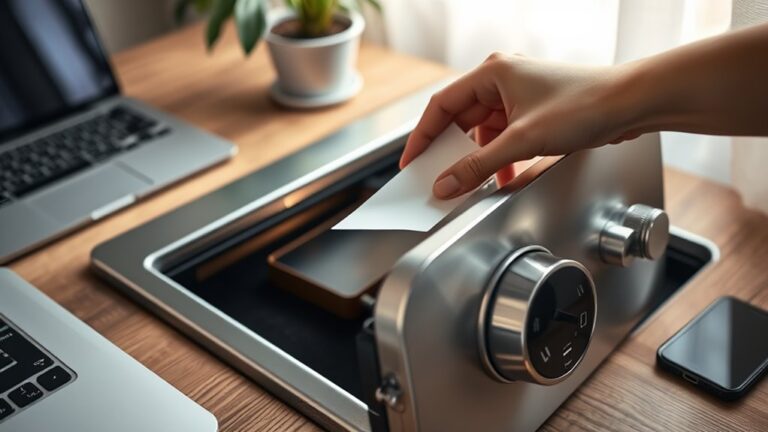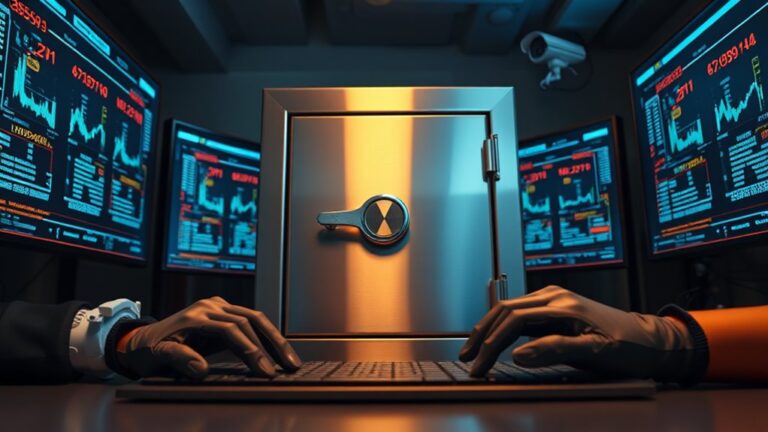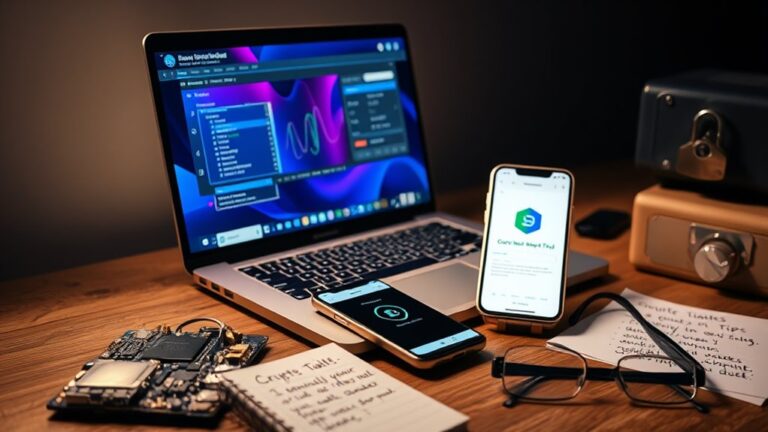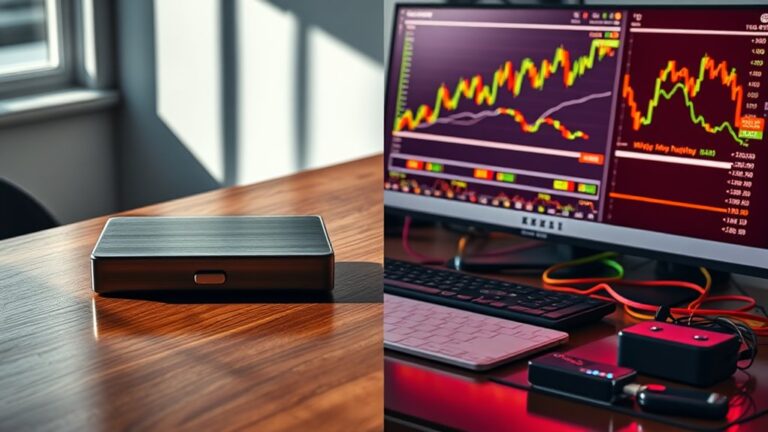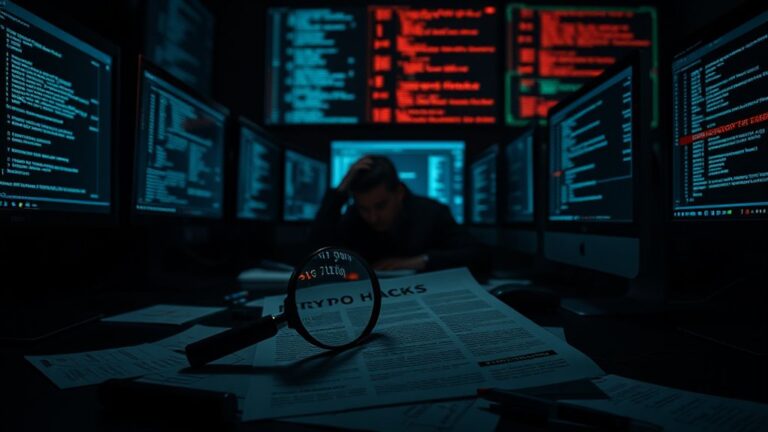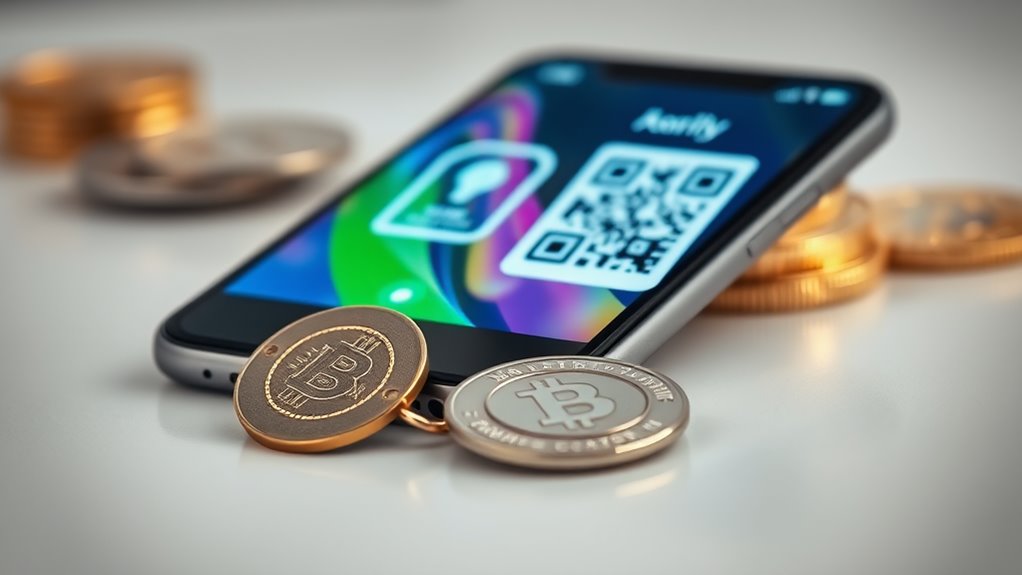
Multi-Factor Authentication: How Does It Protect Your Crypto?
Multi-factor authentication (MFA) protects cryptocurrency by requiring multiple verification methods before account access. This security approach combines passwords with additional layers like authenticator apps, SMS codes, or biometric data. Unlike single-factor authentication, MFA effectively blocks common attacks including phishing and credential stuffing—critical for irreversible crypto transactions. Major exchange hacks often succeed when proper verification systems aren’t implemented. Properly configured MFA on all exchange accounts and wallets greatly reduces unauthorized access risks.
Key Takeaways
- MFA requires multiple verification methods, making unauthorized access significantly more difficult even if passwords are compromised.
- Unlike single-factor authentication, MFA blocks common attacks like credential stuffing and phishing attempts targeting crypto assets.
- Hardware tokens and authenticator apps provide stronger protection than SMS codes for securing cryptocurrency accounts.
- Enabling MFA for all sensitive actions, especially withdrawals, adds crucial security layers for irreversible cryptocurrency transactions.
- Recent crypto breaches resulting in billions lost could have been prevented with proper MFA implementation across all access points.
What Is Multi-Factor Authentication in Cryptocurrency?
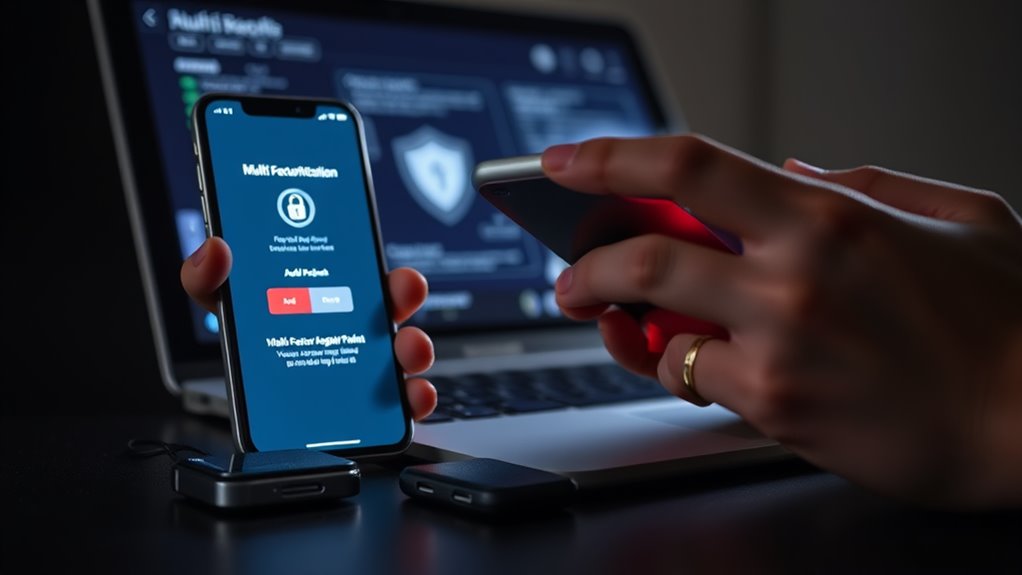
Security in the cryptocurrency world functions as an essential shield against unauthorized access to digital assets. Multi-factor authentication (MFA) forms a critical component of this shield, requiring users to verify their identity through multiple methods before gaining access to their crypto accounts.
MFA operates on a simple principle: combining something the user knows (password), something they have (mobile device or hardware token), or something they are (biometric data). This layered approach considerably enhances security in cryptocurrency platforms, where transactions are irreversible due to their decentralized nature.
Common MFA methods in crypto include SMS codes, authenticator apps like Google Authenticator, email verification, hardware tokens, and biometric verification. By implementing these additional verification layers, users can protect their digital assets even if their password becomes compromised. Furthermore, adopting multi-factor authentication methods can significantly reduce the risk of unauthorized account access, complementing other security practices like cold wallets.
Beyond Passwords: The Three Pillars of MFA Security

The foundation of robust cryptocurrency protection extends far beyond simple password implementation, incorporating a sophisticated three-layered defense system known as multi-factor authentication. These three distinct authentication methods work together to create a thorough security framework.
| Factor Type | Description | Common Examples | Security Level |
|---|---|---|---|
| Knowledge | Something you know | Passwords, PINs, Security questions | Basic |
| Possession | Something you have | Smartphones, Security tokens, U2F keys | Intermediate |
| Inherence | Something you are | Fingerprints, Facial recognition, Voice patterns | Advanced |
Each pillar serves a unique purpose in the authentication process. Knowledge factors provide the first line of defense, possession factors add a physical component that’s difficult to duplicate, and inherence factors incorporate biological uniqueness that’s challenging to falsify. Implementing two-factor authentication can significantly enhance your security by adding an additional layer of verification.
MFA vs. Single-Factor Authentication: Why It Matters for Your Crypto
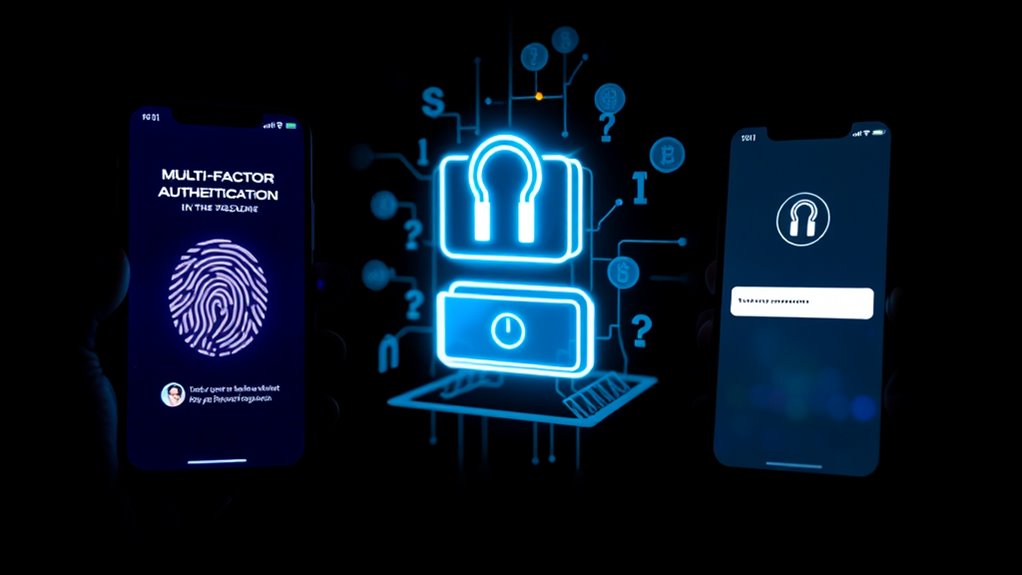
When cryptocurrency investors consider security protocols, understanding the stark contrast between Multi-Factor Authentication (MFA) and Single-Factor Authentication (SFA) becomes essential for protecting digital assets.
SFA relies on a single verification method, typically a password, creating a considerable vulnerability that hackers frequently exploit.
MFA establishes multiple security layers, requiring additional verification steps beyond passwords, such as authenticator apps, hardware tokens, or biometrics. This multi-layered approach effectively blocks common attacks like credential stuffing and phishing attempts.
The limitations of SFA are particularly concerning in cryptocurrency, where transactions are irreversible. Once funds are stolen from SFA-protected accounts, recovery is nearly impossible.
MFA considerably reduces these risks, with research showing it blocks a substantial percentage of automated attacks, making it the preferred choice for serious crypto investors. Additionally, implementing MFA is crucial for securing sensitive information, as it adds an essential layer of protection against unauthorized access to digital wallets.
Implementing MFA on Exchanges and Wallets
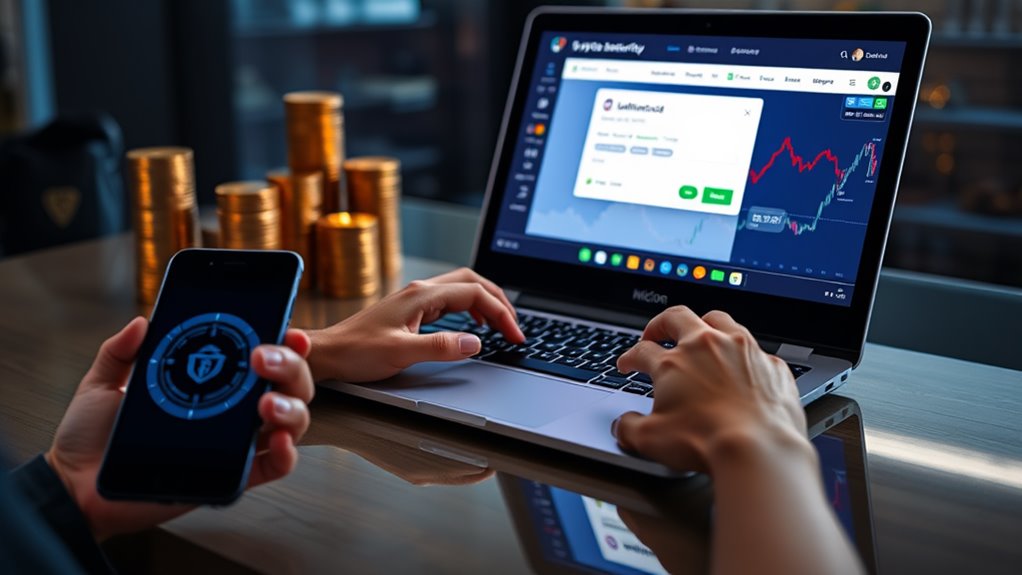
Having established why MFA outperforms single-factor authentication for cryptocurrency security, investors must now understand how to properly implement these protective measures.
Cryptocurrency exchanges and wallets offer various MFA options that create additional security layers beyond passwords, making unauthorized access considerably more difficult.
When implementing MFA for crypto security, users should:
- Choose appropriate authentication methods – authenticator apps provide stronger security than SMS verification
- Set up backup recovery options to prevent account lockouts
- Enable MFA for all sensitive actions, particularly withdrawals and account setting changes
- Regularly review security notifications and unusual activity alerts
Most exchanges offer straightforward MFA setup processes, typically involving linking an authenticator app or hardware token. Additionally, protecting personal and financial information is vital to maintaining security, ensuring that even if login credentials are compromised, attackers cannot complete transactions without the second authentication factor.
Real-World Security Breaches MFA Could Have Prevented
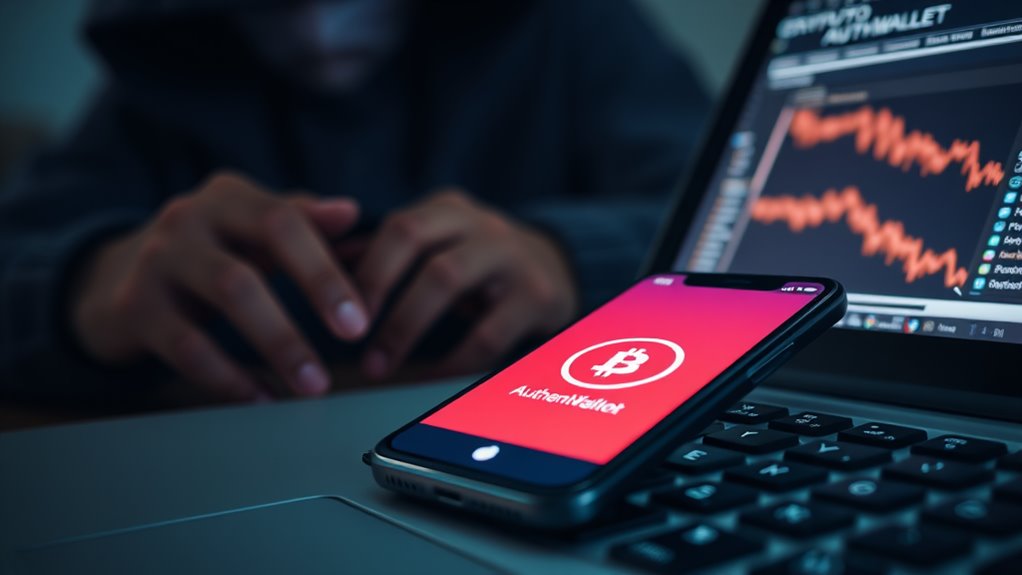
Numerous high-profile cryptocurrency breaches over recent years illustrate the devastating consequences of inadequate security measures.
The 2024 DMM Bitcoin hack, where attackers stole 4,500 BTC, specifically highlighted deficiencies in access controls that proper MFA implementation could have mitigated.
Similarly, the $1.4 billion Bybit theft demonstrated vulnerabilities in transaction processes where additional authentication layers would have created essential security checkpoints.
Wallet breaches like the Atomic Wallet hack, resulting in $100 million stolen, and Trust Wallet’s $4 million loss, underscore how personal crypto holdings remain vulnerable without robust verification systems.
Even sophisticated operations aren’t immune – Wintermute’s $162 million loss and Stake.com’s $41 million breach reveal that market makers face similar threats that could be reduced through thorough MFA deployment across all access points. Implementing two-factor authentication can significantly enhance security and protect against unauthorized access to crypto assets.
Frequently Asked Questions
Can MFA Be Bypassed by Sophisticated Hackers?
Sophisticated hackers can bypass MFA through techniques like real-time phishing, SIM swapping, man-in-the-middle attacks, and malware. While MFA considerably increases security, no authentication system is completely impenetrable against advanced persistent threats.
What Happens if I Lose My MFA Device?
If a user loses their MFA device, they can typically recover account access using backup codes provided during setup. Most services offer alternative verification methods or support channels to assist in regaining secure access.
Does MFA Slow Down Transaction Processing Times?
MFA does not slow down cryptocurrency transaction processing times. It only adds an extra step during login or authorization. Transaction speed depends primarily on blockchain confirmations and network conditions, independent of authentication methods.
Are All MFA Methods Equally Secure for Cryptocurrency?
All MFA methods are not equally secure for cryptocurrency. Hardware keys offer the highest security, followed by authenticator apps, while SMS-based verification is particularly weaker due to vulnerabilities like SIM swapping attacks.
How Does MFA Work During Network Outages?
Like Odysseus charting treacherous waters, MFA faces challenges during network outages. SMS-based methods fail while offline options like authenticator apps, physical security keys, and backup codes remain functional, providing alternative paths to account access.
Conclusion
Multi-factor authentication stands as a digital fortress guarding cryptocurrency investments against unauthorized access. By requiring multiple verification methods, MFA considerably reduces the risk of account breaches and asset theft. As cryptocurrency adoption grows, implementing robust security measures becomes increasingly essential. Smart investors recognize that while no security system is impenetrable, MFA represents a crucial layer of protection in an ecosystem where a single breach can mean permanent financial loss.


